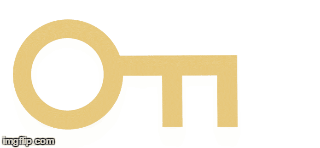
The Key to Successful Applications
The qualified match approach to personal statements
If you are applying for graduate school and fellowships – variations of this paragraph will read eerily familiar to you:
The Statement of Purpose should briefly detail your reasons for applying to the proposed program at [organization]. Please describe your background and experience (academic and extracurricular), which may aid the admissions committee in evaluating your aptitude and motivation for [program].
Groan.
Perhaps it feels familiar to be drowning in an ocean of anxiety, as waves of self-consciousness overwhelm your ability to craft anything that you would ever consider submitting to an application review committee.
But, never fear! In this blog post, I hope to highlight two major concepts that are critical to success in an application. While this article will focus mostly on examples related to graduate school and fellowship applications, it is useful to note that these ideas are widely applicable to all sorts of communication throughout your career.
First, a quick FAQ:
1. Umm… why are you even qualified to write about this?
Aside from having submitted my own pile of applications for various degree programs, scholarships/fellowships, and short-term internships, I am also a Communication Fellow at the MIT Biological Engineering Communication Lab (BECL). By day, we Communication Fellows are your ordinary cohort of MIT engineers and by night we masquerade as trained coaches who specialize in personalized writing help*.
In Fall 2016, BECL paired me with Alex Triassi to collaborate on a workshop to help applicants capture their respective narratives and career aspirations in – you guessed it – personal statements! Together, we came up with the lessons presented in this blog post.
2. Wait. You’re going to give me a secret formula for writing an awesome personal statement?
Not really… but kind of! While there isn’t a quick-and-easy recipe that dictates sentence-by-sentence what your personal statement should be, this post will 1) identify two elements that we think are critical to a successful application and 2) present some guidelines and exercises to get you past writer’s block.
Figure 1: The “key” to success is to show that you are a Qualified Match
So, the secret? Show that you’re a qualified match! It may seem obvious now, but it’ll become apparent soon enough that application-writing is easier in theory than in practice.
Part I: Show that you’re qualified by quantifying and interpreting your experiences
But Amanda, can’t I just give you my resume?
No, sadly, your resume is just a laundry list of all the experiences you have had without context. To show that you are qualified, it’s important to quantify and interpret your experiences and personal attributes. Think of this as providing meaning, or answering the question “so what?”.
How does this work in practice?
Let’s think – everyone really likes intelligent and hardworking people, right? Sure, but stating an opinion of yourself (Fig. 2, white box) isn’t very convincing. This approach lacks unbiased facts, and can come off rather arrogant. Instead, try to quantify by identifying concrete examples of those personal attributes (Fig. 2, grey box).

Figure 2: Show, don’t tell. Give the reader concrete examples of your experience to demonstrate impact.
Great, we quantified! However, the reader still has no idea why he/she should care about what you wrote. That’s why we sometimes need to add an extra layer of “so what,” in which we interpret. Figure 3 is an example of an applicant describing a teaching assistant experience (white box).
As the applicant quantifies (grey box), we learn something about the “reach” of the applicant’s efforts. But, it is still unclear why the applicant might have cared about or even wanted to TA in the first place. In the anticipation of this reaction by the reader, the applicant has written another sentence which serves to interpret, and tells the reader why his/her TA-ship was meaningful (red box).

Figure 3: In addition to quantifying your experience, remember that adding an extra layer of “so what” can help illustrate your values and the meaning of your experience.
Altogether, efforts to quantify and interpret should help highlight the importance of your experiences for your reader. The description of your experiences, if crafted properly, will help showcase your aptitude and aspirations.
So, what kinds of experiences should you talk about in an application? For the most part, intellectual experiences should take precedent in applications for science/engineering-focused organizations. Among intellectual experiences, it is common to describe scientific interests and career goals, which can be built upon descriptions of previous research opportunities and coursework. Less common but still typical are humanistic (i.e. teaching, mentoring, volunteering, travel, leadership), memorable (i.e. unusual hobbies or background), and personal (i.e. family, friends) experiences.
Use your experiences to help yourself stand out in the applicant pool. But, be careful to limit the number of experiences you include. A typical reader (probably a busy professor skimming too many applications on too few cups of coffee) will probably only retain 3-4 takeaways. Thus, we recommend to go deep (quantify and interpret), and not broad.
However, it may be difficult to figure out what details to include and what angles to use when quantifying and interpreting an experience. This brings us to the second half of our how-to for writing successful applications.
Part II: Show that you’re a match by making yourself relevant
This is the most overlooked part of an application. Most people get so caught up in writing about their qualifications, that it does not occur that those qualifications must be relevant! (This was not obvious to me in undergrad, and makes me cringe when I read over my old applications.) Importantly, neglecting to demonstrate how you match to a program can signal to an application review committee that you did not do your research on them.
So, what does it mean to match? At BECL, we like to use a lock-and-key metaphor (Fig. 4). It is important to find the right match, because it means that your (personal) and their (organization) mission and values are in harmony (which will generally form the most synergistic relationship).

Figure 4: Demonstrate a match by aligning aspects of “you” with the organization’s philosophy
Revisiting Part I, we can see that the interpret box is also an opportunity to match because it allows you to illustrate personal values and goals. It also helps to guide the angle of your interpretation, since there are many (sometimes irrelevant, depending on context) ways to talk about how an experience influenced your growth as a scientist.
Let’s reexamine Figure 3; the interpretation of the applicant’s TA experience would be particularly effective if he/she was applying for a position or program that values communication. If not, it may be advisable to include other related experiences, or to consider alternative interpretations.
How do we identify what defines an organization? Let’s take the MIT Biological Engineering department as an example. As a first step, we visited the website and poked around until we found something that resembled a mission statement or philosophy. Below, we bolded words in an excerpt that describes the organization’s position, culture, projects, and goals:
- To define, establish, and lead the emerging discipline of biological engineering – fusing engineering with modern (molecular-to-’omic) biology – for revolutionary address of societal challenges and opportunities.
- To pioneer “creation of useful things from biological components and mechanisms.”
- To prepare the next generation(s) of leaders to advance bioscience and biotechnology via quantitative, integrative, design-oriented analysis & synthesis paradigm on molecular/cell biological mechanisms.
We can use the key words and phrases identified in the mission statement to drive the selection of qualifications to include and expand upon in an application.
Practical Next Steps
So, start early and get organized! Writing a personal statement is a difficult and time-consuming, but not impossible task. Remember to write an honest narrative that shows what you are excited about. If possible, aim to tie your experiences and stories together, such that your essay paints a consistent picture of you. Get feedback often from peers and mentors on your writing, and remember that the key to success to is show that you are a qualified match!
Let’s recap:
- Qualify by quantifying and interpreting your experiences to demonstrate meaning
- Be concrete, not vague
- Match by making sure your personal values are in sync with the organization’s philosophy
- Include only relevant experiences
Want to practice? Try this activity:
Pick something to apply to, and then find the mission statement of the organization (match). Find at least three key words and phrases that you think best capture the organization’s philosophy. With these points in mind, list 1-2 experiences or personal attributes from your CV/resume that help you fit into the applicant pool. Next, quantify and interpret your qualifications to put your best foot forward and stand out (qualify). (We find that this worksheet is a great guide for the exercise.)
If you are…
…a current student/postdoctoral associate/faculty member at MIT, visit this page to book a free appointment with a field-specific Communication Lab (Biological Engineering, Nuclear Science & Engineering, Electrical Engineering & Computer Science, Broad Institute, Sandbox Innovation Fund Program – with more coming soon!).
… a prospective student looking to apply to select MIT PhD programs, read about and visit BEAAP (Biological Engineering Application Assistance Program; MIT Biological Engineering), SOS (Students Offering Support; MIT Media Lab), or PASS (Peer Application Support Service; MIT Urban Studies & Planning) to be connected with a personal mentor through an application assistant program.
…neither, please visit CommKit for resources written by BECL communication fellows and staff to help people around the world with science/engineering-flavored communication.
Share this post:

